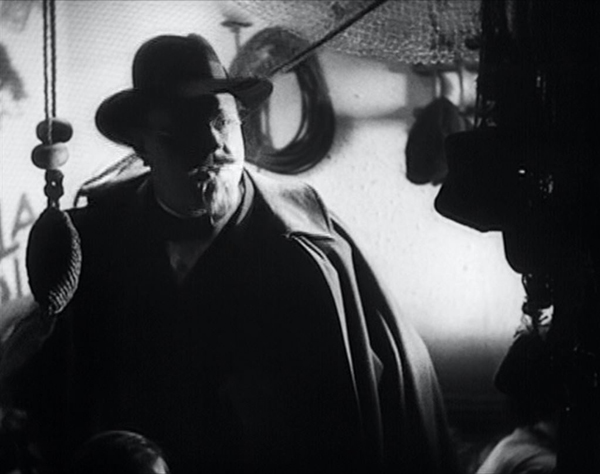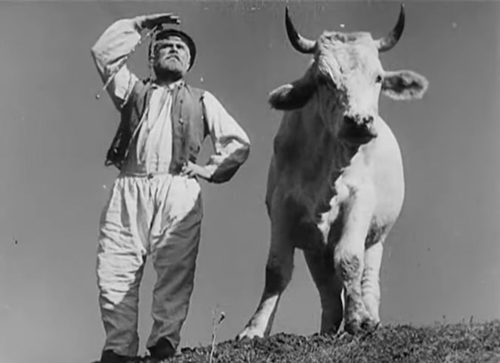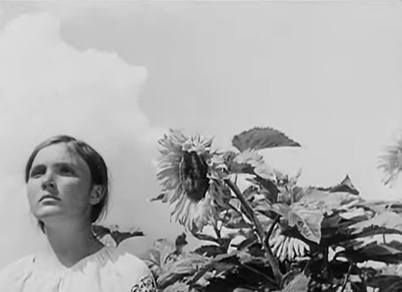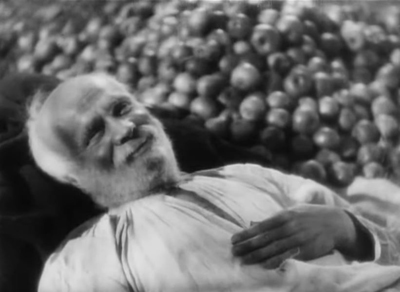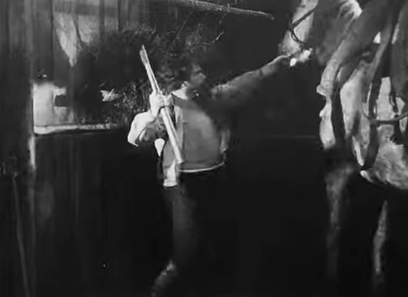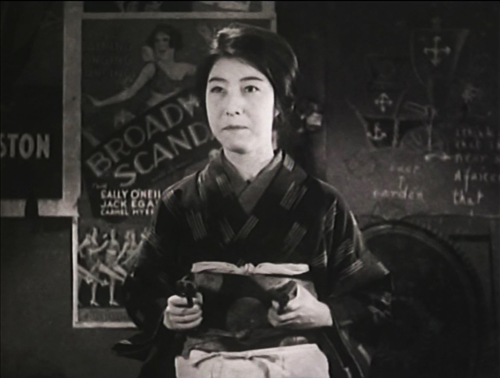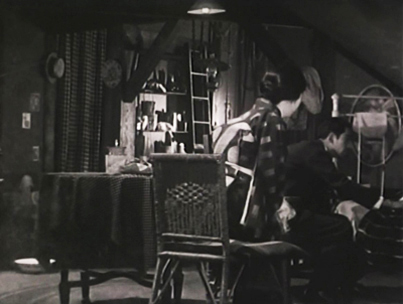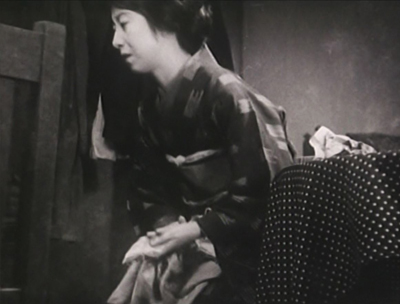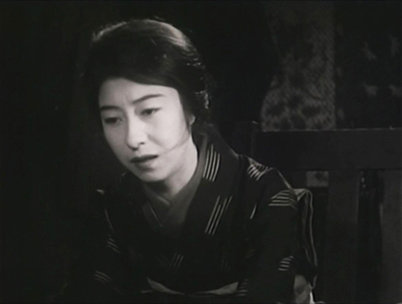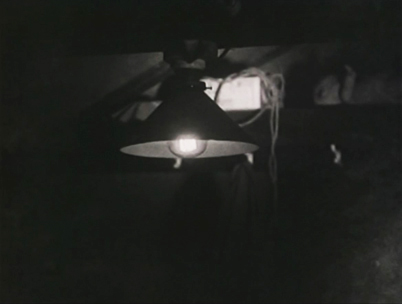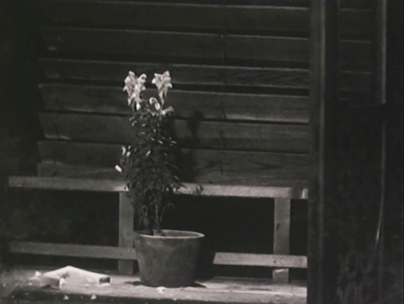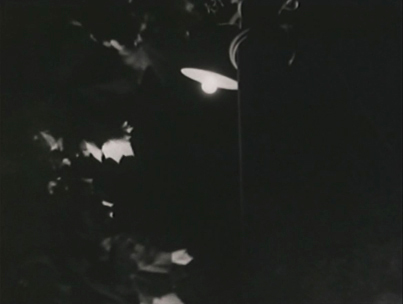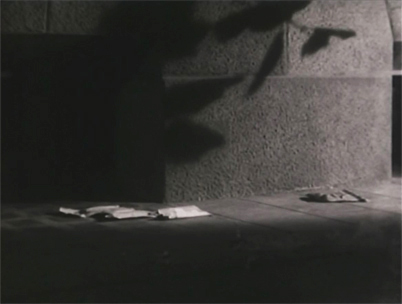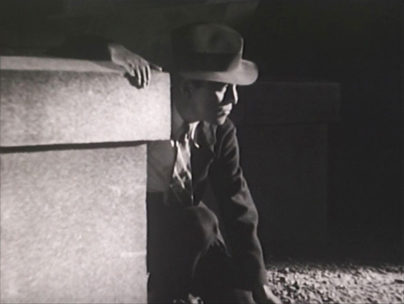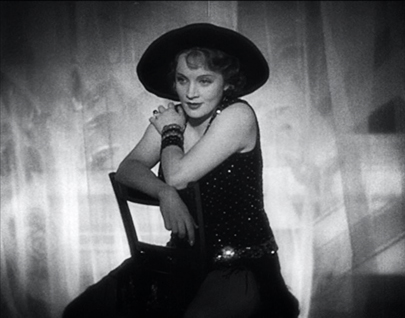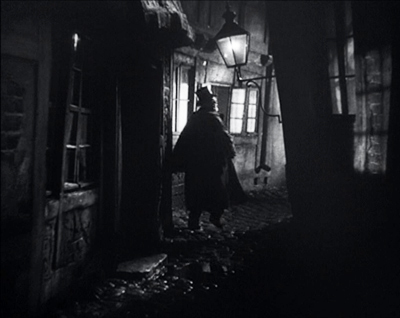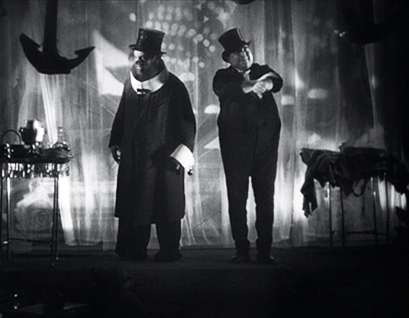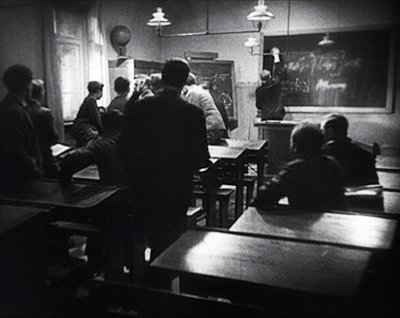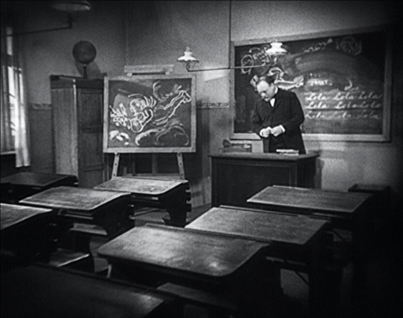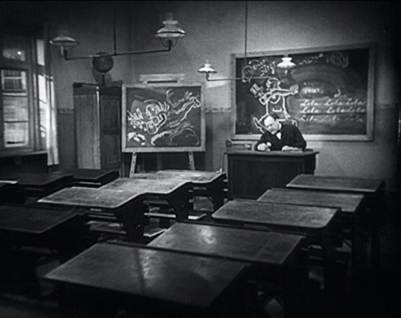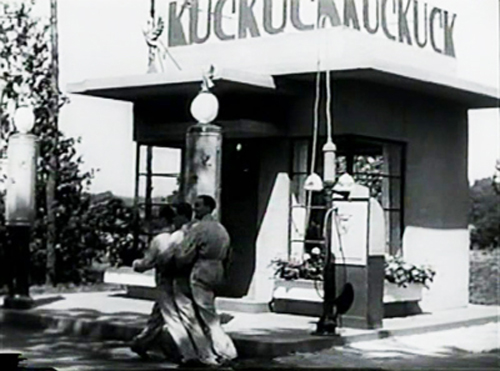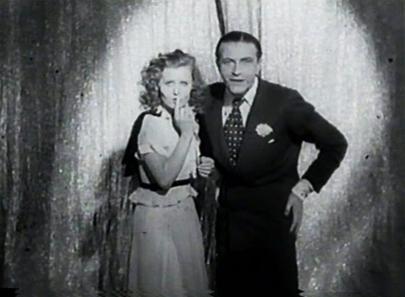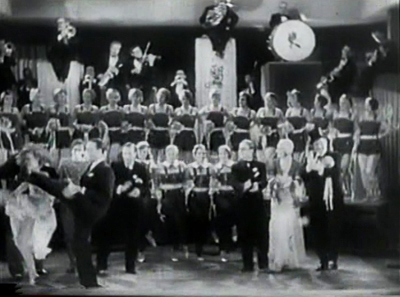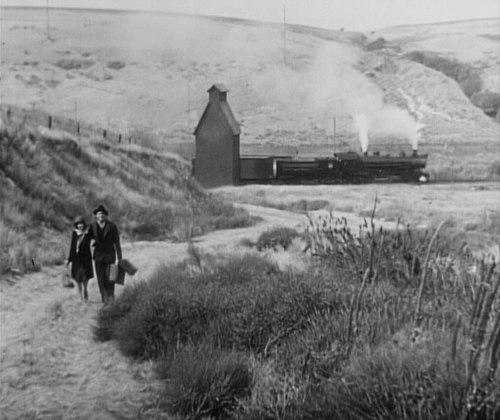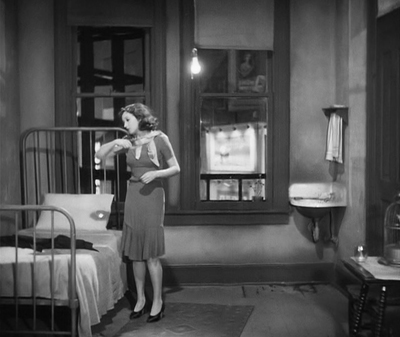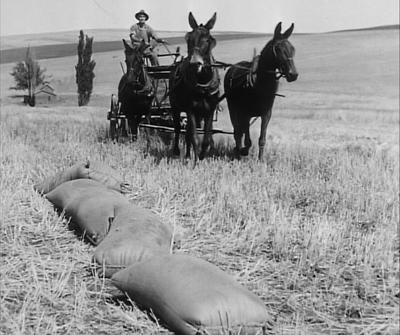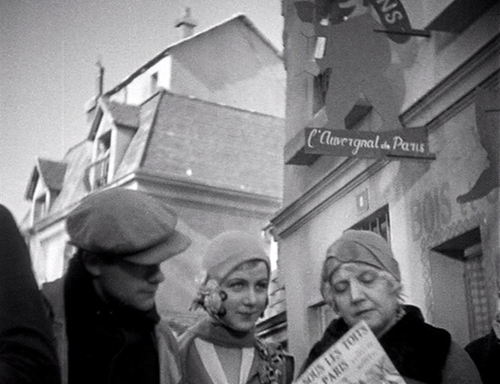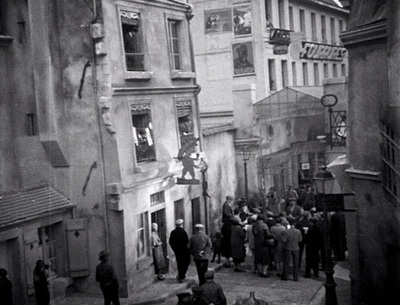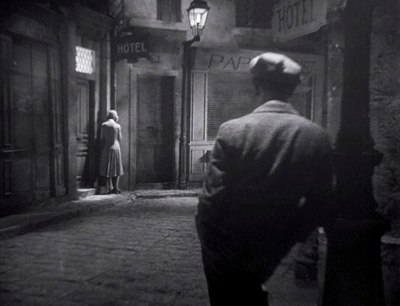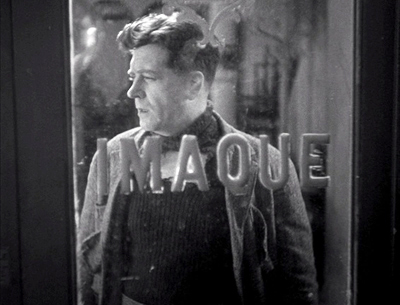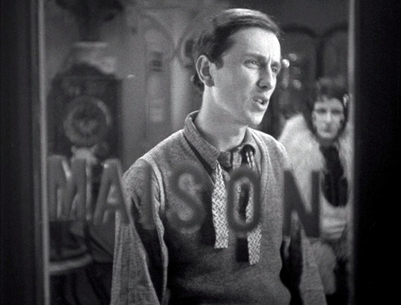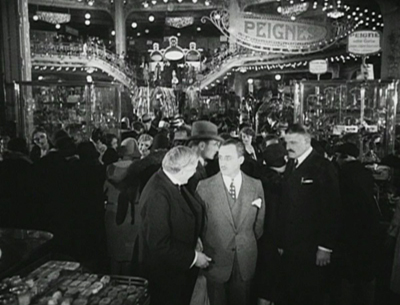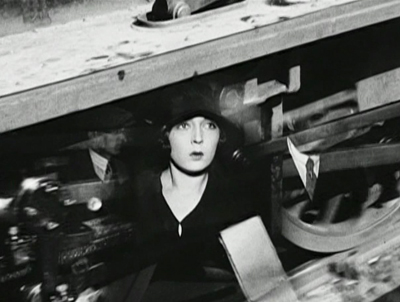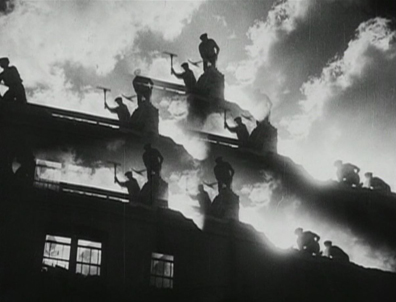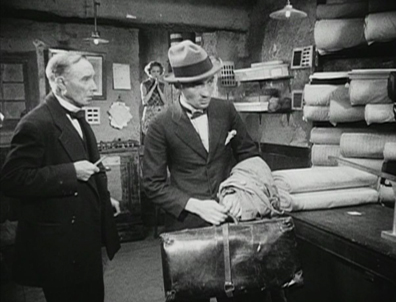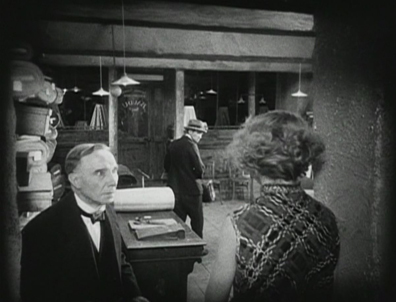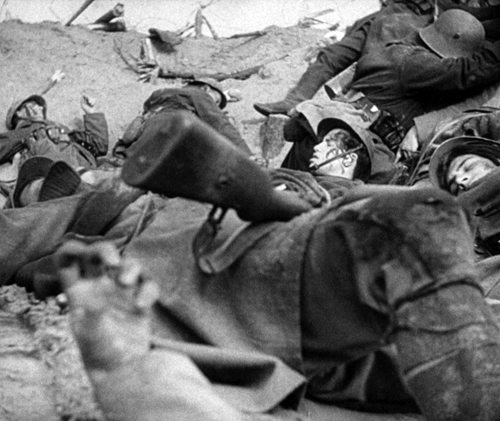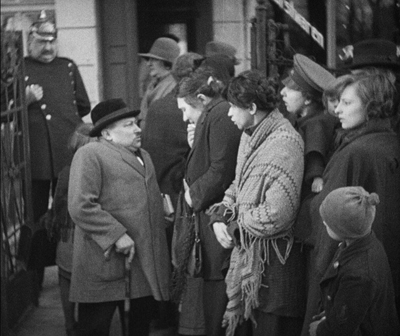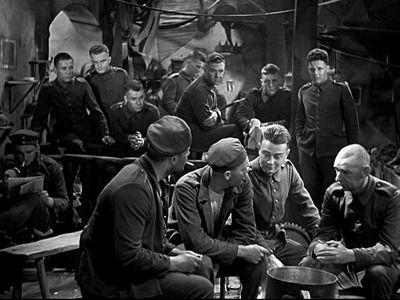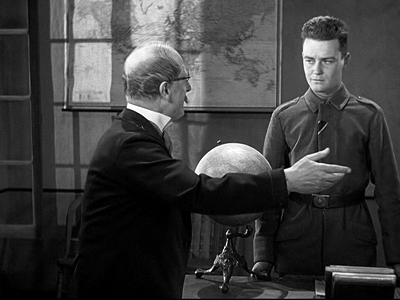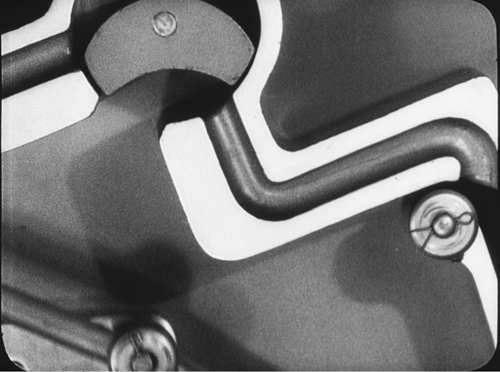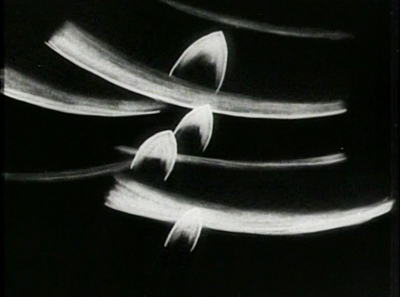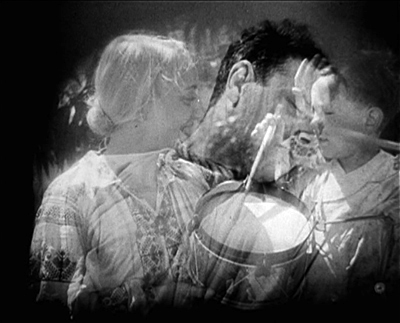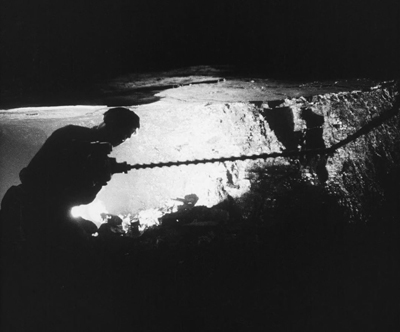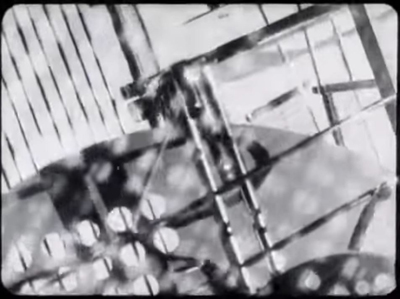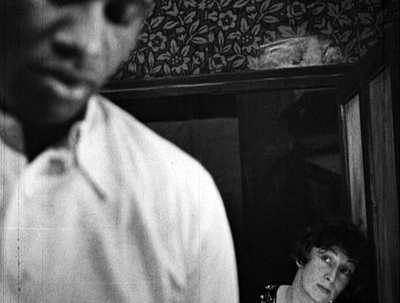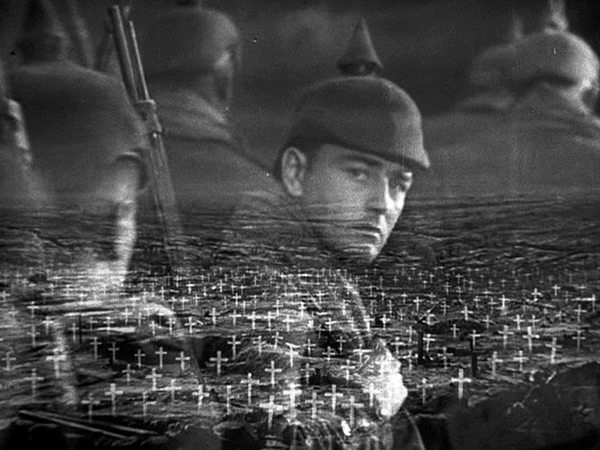The ten best films of … 1930
Monday | December 28, 2020 open printable version
open printable version
The Blue Angel (1930)
Kristin here:
The end of this horrendous year is fast approaching, though we are still facing a long struggle to end the pandemic. On a happier note, it is also time for a little distraction in the form of my annual year-end round-up of the ten best films of ninety years ago. 1930 was also a grim year, with the Depression well established and nowhere close to its end. Herbert Hoover decided not to use federal governmental powers to help end the crisis (sound familiar?) and eventually was cashiered into a 32-year retirement, though he continued to oppose Roosevelt’s policies. At least we don’t face that long a stretch of down time with the current “president.”
I discovered that 1930 did not produce many masterpieces. There are some obvious titles on my final list, as always, but some of the films are good but not great. In any other year they would not have made the cut. (The contrast with 1927, for example, is pretty stark.) Presumably one major reason is that filmmakers were still struggling with the introduction of sound. Fritz Lang didn’t release a film that year, though he came roaring back with M in 1931, as assured a treatment of sound cinema as one could find during those early days. (For those of you who subscribe to The Criterion Channel, I contributed a video essay on sound in M to David’s, Jeff Smith’s, and my series, also called “Observations on Film Art.”) Eisenstein was off in Hollywood unsuccessfully trying to make a film for Paramount and about to fall in love with Mexico. With one notable exception, Hollywood’s important auteurs made no films or minor films or films that don’t survive.
This dearth of really great films will be short-lived. From 1932 on, I shall no doubt have the opposite problem. For now, here are my picks. All the films are worth seeing, though good copies or even any copies of some are hard to track down. (The idea that all films are available to stream online is as absurd as when, back in 2007 when I wrote “The Celestial Multiplex.”) Some of my illustrations in this entry are subpar, but 1930 does not seem to be a year that studios and home-video companies are mining for titles to restore. I hope this entry will give them a few ideas.
I try not to include more than one film by the same director in these entries, aiming for variety and coverage. This year’s most prolific great directors were Josef von Sternberg and Yasujiro Ozu, who together could have filled in half the ten slots, but I have stuck to my guideline. (When we reach 1932 and 1933, I may be tempted to make an exception for Ozu.)
Given that sound developed at a different pace in different countries, some of this year’s films are silent.
For previous 90-year-ago lists, see 1917, 1918, 1919, 1920, 1921, 1922, 1923, 1924, 1925, 1926, 1927, 1928 and 1929.
Dovzhenko’s Earth
Some of the films on my top-ten list this year may raise eyebrows, but Earth is probably my least controversial choice. It remains one of the last classics of the Soviet Montage movement.
The policy of merging small farms into collective ones had begun in 1927 as part of the First Five-Year Plan. In 1929-30, the push increased, with the seizure of the assets of the more prosperous peasants who resisted collectivization, termed kulaks. Major films were made with the aim of villainizing the kulaks and emphasizing the backbreaking labor involved in traditional, non-mechanized farming. Eager young peasants were hailed as heroes, and tractors appeared as the means to greatly increase wheat yields–wheat which was often seized and sent to the cities to enable rapid industrialization.
Eisenstein had promoted collectivization with his Old and New in 1929, and Dovzhenko followed a year later with Earth. While Eisenstein’s approach had been sarcastic and comic, Dovzhenko pursued his poetic approach to cinema. The opening celebrates the fecundity of the earth and the cycles of nature. The famous opening juxtaposes a peasant girl’s face with a large sunflower. Semion, an aged peasant, is calmly, even cheerfully awaiting his imminent death, lying on a blanket and surrounded by heaps of apples.
A kulak family is soon introduced, angry at the idea that their possessions will be seized. The head of the family declares that he will kill his animals rather than turn them over, and he tries to attack his horse with an axe.
The arrival of the village’s new government-provided tractor marks a shift to an emphasis on the advantages of collective farming. As it approaches, the kulaks stand watching and mocking the idea of a machine taking over. In one shot, an elderly kulak stands framed against the sky, his wealth indicated by the presence of a hefty cow. The tractor temporarily halts, but it turns out that the radiator is dry. The simple solution is for the collective members to urinate into it.
Earth is a visually beautiful film, but like other Soviet classics I have complained about, there is no decent print of it available. The old Kino disc groups it with Pudovkin’s The End of St. Petersburg (the cropping of which I mentiooned in the 1927 entry) and Chess Fever. The copy of Earth is too dark and indistinct. To get some frames for illustrations, I watched the visually superior copy on YouTube, but there the images are cropped to a widescreen format. Just as bad, there are ads scattered through it, including one in the middle of Vasyl’s twilight dance in the road just before he is shot!
As before, I must end by pointing out that an archival restoration and a Blu-ray release are in order.
Ozu debuts on the list
Although after 1937 there are years when Ozu did not make a film, he will likely feature on these lists as long as I continue to post them. In 1930 he made six features and a short. Only three survive: Walk Cheerfully, I Flunked, But … , and That Night’s Wife. I’ve chosen the last, though Walk Cheerfully is a viable candidate as well. Sound was adopted slowly in Japan, and Ozu held out until 1936 before releasing his first talkie, The Only Son, which will doubtless feature on my list for that year.
The British Film Institute released That Night’s Wife in a boxed set called “The Gangster Films,” along with Walk Cheerfully and Dragnet Girl. Yes, Ozu made gangster films, including the wonderful Dragnet Girl, the film that might lead me to make my exception in the 1933 entry.
That Night’s Wife, though, is not really a gangster film. Shuji, the father of a daughter with a potentially fatal illness, is not a gang member but a decent working man who stages a hold-up to get money for her medicine. Ozu handles this hoary plot premise with his usual unconventional approach.
The opening, with its shots of dark, empty streets through which the police chase Shuji, is film noir ahead of its time. We soon are introduced to his worried wife, Mayumi, tending the little girl. She’s cute but has a distinctly bratty streak so common to Ozu children. This and fairly frequent moments of subtle humor help Ozu avoid a purely melodramatic presentation of the situation.
Once Shuji arrives at home, Mayumi gets him to confess what he has done. He intends to turn himself in after the daughter’s crisis passes, but a gruff detective who has posed as a cabby to find out where he lives, appears. Being told that the daughter will only survive if she lasts through the night, the Detective agrees to stay and settles in to guard his prisoner. Mayumi reveals her inner toughness and determination to defend her husband. At one point the Detective dozes off and she steals his gun and points it and her husband’s pistol at him, urging Shuji to escape (above). That shot, by the way, shows a motif typical of early Ozu films: having posters, often for American movies, visible on the walls behind the characters.
That Night’s Wife doesn’t display the fully mature Ozu style, but no one would mistake it for a film by another director. He has already mastered the perfect match on action, and he uses one in the early scene where Mayumi sits down as the doctor tends the daughter. Ozu cuts in with a move across the axis of action that places us 180 degrees on the other side of her.
Ozu is not using 360-degree space consistently yet, but he’s playing with the idea. Twice he has transitions that move through a series of adjacent spaces, one of his key devices and one that will last throughout his career. Here we move from the worried Mayumi to Shuji, trying to elude the police after the theft.
There’s a lyrical motif mutating from shot to shot: worried wife, interior lamp, interior plant against wood, outdoor light with leaves, stone building with the shadows of leaves, and stone building with the subject of Mayumi’s thoughts, cowering. But causally the four “extra” shots tell us little about where Shuji is in relation to the home he seeks to reach.
I took these frames from the BFI set, but in the US Criterion released the same three films in its Eclipse brand under the more accurate title “Silent Ozu – Three Crime Dramas.” (I Flunked, But … is in the BFI’s four-film set, “The Student Comedies.” Criterion hasn’t released a DVD of it, but it is streaming on the Channel.)
The Germans’ sound advantage
Unlike other countries, Germany developed its own sound system, owned by the Tobis-Klangfilm company. Tobis was initially able to use court injunctions to keep American films out of the German market. In 1930, this pressure led ERPI and RCA, owners of patents on the major US sound-on-film systems, to form a cartel in conjunction with Tobis, which had producing and distribution subsidiaries throughout Europe. Tobis-Klangfilm continued to dominate European sound recording and reproduction until the beginning of World War II.
Partly as a result of this technical advantage, several early 1930s German films became classics, though not all of them are known abroad.
One internationally famous classic is The Blue Angel. I’ve mentioned that von Sternberg was among the most prolific of major directors in 1930. I debated whether to put this or Morocco on the list. If cinematography were the main criterion, Morocco would have been the choice. Not surprisingly, Lee Garmes’s camerawork and lighting is spectacularly good.
I initially saw The Blue Angel decades ago, in grad school. It was the usual hazy 16mm print of the American release version. Watching it again in the German version, remastered from a 35mm negative, was a revelation. Not that it will ever be one of my favorites. It has its problems. The motif of the clown, implied to be Lola’s degraded ex-lover, is heavy-handed. Emil Jannings’ lumbering performance as Prof. Rath is at odds with the casual realism of the other performances. The time-passing montage accomplished via a hair-curler ripping down a series of calendar pages creates a time gap of years passing and the characters–especially Lola–have changed radically. Her change from a kind attitude toward Rath to cruelty and indifference is logical, given his passive decline from professor to clown, but it is presented too abruptly. Still, in my opinion the film’s pluses outweigh its minuses.
The Blue Angel, seen in a good print, is wonderfully photographed as well (see top). It may not have Lee Garmes, but it has Günther Rittau (co-cinematographer with Hans Schneeberger). He had lensed Die Nibelungen, Metropolis, Heimkehr, and Asphalt. He brings a dark look to the film, as in these shots of Rath in dignified professor mode and later onstage in a caricature of his former self.
The camera movements are rare and unobtrusive. A visual motif set up early on shows the bustling classroom that Rath presides over, where despite the students’ dislike of him, they obey his strict commands. Later, in after Rath has visited The Blue Angel and met Lola, his blackboard is covered with caricatures and insults drawn there by the students to mock his obsession with Lola. A slow track back emphasizes the empty classroom as he sits at his desk, his authority over the students gone.
No doubt it’s a matter of taste, but I find Marlene Dietrich’s performance here more attractive than in Morocco–and it is, of course, central to the film’s appeal. Her amused playfulness with Rath, her quietly sarcastic attitude toward her sexuality being The Blue Angel’s main attraction, and her frequent bits of business with props unrelated to the story all differ considerably from her Hollywood performances. She has a natural glamor here that will disappear in her roles for von Sternberg in Hollywood.
After this film, von Sternberg made Dietrich a Hollywood symbol of glamor, but as a result she tends to be less spontaneous and active, with the camera and lighting lingering over her. Basically her glamor became more sultry. The result has its own appeal (and Shanghai Express is a good bet for a place on the 1932 list), but it is revealing to see her performing in a way that she only recaptured occasionally, if at all, in her subsequent films.
The frames were taken from the Kino on Video two-disc set, which has both the German and truncated American versions, as well as some supplements. It was subsequently released on Blu-ray, but I haven’t seen that version.
I always try to call attention to little-known films rather than sticking to the conventional classics for the whole list–and there aren’t a lot of such classics this year anyway. This time it’s a charming, imaginative musical romance, Die Drei von der Tankstelle, or “The Three from the Filling Station,” directed by Wilhelm Thiele and starring Lilian Harvey and Willy Fritsch. It was so popular that it outgrossed The Blue Angel in Germany.
Three carefree young men, who start off driving in a car and singing about friendship, arrive in their lavish shared home to discover that they are bankrupt. Low on gas, they are inspired to start their own filling station. They sing a nonsense song, “Kuckuck” (the German equivalent of “cuckoo”) as their belongings are hauled away, and they give this name to their art-deco filling station.
Lilian (the heroine’s name as well) shows up in search of gas for her roadster, and the three men fall in love with her. The rest of the film involves their competition over her. Naturally she chooses Willy (Fritsch’s character name). The two were often paired in later German films of the 1930s and became the ideal movie couple.
The film maintains its playful, often silly tone until the end. As Lilian and Willy are united before a closed theatrical curtain, she turns front and says, “People! The public!” There is an objection that this is not the way to end an operetta and the curtain opens to reveal the entire cast as well as additional dancers and singers performing a lively and somewhat chaotic grand-finale number.
I originally saw this film at the Cinémathèque Royale de Belgique (now the Cinematek). As it does not circulate in the US on home-video, I have taken these low-quality frames from a homemade DVD, probably originally dubbed from an unsubtitled German VHS copy. It is available on a German DVD, since it is considered a perennial classic there. Unfortunately it has no subtitles. (The German manufacturers do not seem to have cottoned onto what their counterparts in other European nations–notably France–have: that if you include optional English subtitles, you can sell more copies.)
I hope, however, that eventually someone at the DVD/Blu-ray companies will discover this very entertaining film and make it more widely available.
A German director abroad
F. W. Murnau’s City Girl is another of those films I saw in a poor print decades ago and respect a great deal more after seeing it in a good version and knowing more about film than I did then. I wouldn’t put it in the same league as some of his earlier films, but for a 1930 list, it stands out.
Murnau was already on the way out at Fox when he was making the film. After his departure, the film was “finished,” including some dialogue scenes that were inserted. As with several other films of the era, such as Borzage’s Lucky Star and Duvivier’s Au Bonheur des Dames (see below), we are lucky in that only the silent version survives. The restored dialogue scenes in Fejos’s Lonesome show how ghastly these added interludes could be. (My apologies to the restorers. Obviously somebody had to do it.)
The heroine of the title is Kate, a waitress in a busy Chicago diner. Disillusioned by the obnoxious male customers she must cope with and lonely in her sparse apartment (below), she dreams of the apparently peaceful countryside that she sees in pictures. Lem wanders in for a meal, having been sent by his tyrannical father to sell the harvest from their wheat farm in Minnesota. He becomes a regular customer as he stays in Chicago waiting for the price of wheat to rise. His friendly, courteous behavior confirms her idealization of rural life, and they fall in love. Once she arrives at the farm, however, her illusions are shattered by the father’s violent rejection and the loutish behavior of a gang hired to help with the harvest, against neither of whom Lem seems able to defend her.
As in Sunrise, City Girl creates a contrast of city and country, though on the whole the city here comes across as more oppressive than the relatively friendly treatment the couple in Sunrise receive there. Sunrise spends half the film presenting the aftermath to the couple’s reconciliation, while City Girl has a grimmer tone, and the happy ending arrives very suddenly and briefly.
According to Janet Bergstrom’s informative essay accompanying the “Murnau, Borzage and Fox” DVD boxed-set, Murnau initially wanted to film in Grandeur, a widescreen format of the day, but the budget wouldn’t allow it. (I suppose the effect might have worked, as the 70mm version of Days of Heaven demonstrates with a similar locale.) Perhaps it was just as well. Cinematographer Ernest Palmer has handled the landscapes well (top of this section) and given a distinctly documentary look to the harvest scenes.
The restored version of the film in the Fox boxed-set is excellent, but that box is long out of print. British company Eureka! has released City Girl on Blu-ray, which should look even better, available as an import on Amazon.com in the US (where it is listed as Blu-ray but is the same edition as is listed on amazon.co.uk as dual-format Blu-ray/DVD).
The French between silence and sound
René Clair has long been considered one of the directors whose early sound films were among the most imaginative and technically sophisticated. Indeed, that era was perhaps the high point of his career, with Sous les toits de Paris (1930), Le Million (1931), and À nous la liberté (1932) coming out in quick succession. The first two were made for the French subsidiary of Tobis, Films Sonores Tobis, which produced French films in its Epinay Studios. Its prosperity and technical sophistication are evident in the large sets constructed for Sous les toits.
The film centers on Albert, who makes his living selling sheet music to passersby in the street and leading them in sing-alongs. In the opening scene, a small crowd joins in a song called “Sous les toits de Paris” (above). He falls in love with Pola, who is claimed by Fred, one of the many thugs played by Gaston Modot across his career. She moves in with Albert, but when he is framed for a crime committed by Fred’s gang and sent to jail, she takes up with Albert’s best friend.
This light tale gives Clair the opportunity to show off the flexibility and even flashiness of his style. The opening shot is a long crane movement descending from chimneys against the sky to the crowd singing along with Albert. Clair also uses a variety of camera angles, as in the low-angle still above.
There are several carefully lit street scenes, including this one shot in depth with both characters’ backs to the camera as Albert spots Pola outside a bar.
The climactic scene involves a tense conversation between Albert and his pal as Pola looks on. Clair shoots the two men in shot/reverse shot through glass doors, so that we do not hear them but only watch their actions and faces in a deliberate reversion to silent cinema.
Sous les toits de Paris is still in print as a DVD from The Criterion Collection. (An early issue, number 161.)
At least in the US, Julien Duvivier is not as familiar as Clair, being known mainly for Pépé le Moko, but his reputation is rightly growing. David did his part in promoting Duvivier by contributing a video analysis of his 1941 Hollywood romance Lydia on The Criterion Channel.
I don’t know whether Duvivier was inspired by L’Herbier’s L’Argent (which featured on my 1928 list) to make Au Bonheur des Dames, but there are certainly similarities between them. L’Herbier’s film was adapted from the eighteenth novel in Zola’s Rougon-Macquart series, published in 1891, but the film updated the story to the 1920s. Au Bonheur des Dames was adapted from the eleventh novel in the series (1883) and also updated. L’Argent showed the harm done by large banks, while Au Bonheur des Dames deals with the damage wrought on traditional small shops by the rise of huge, corporate-level department stores. Zola had modeled his giant store on Le Bon Marché, while Duvivier was able to shoot interiors for the store “Au Bonheur des Dames” in the Galerie Lafayette–much as L’Herbier had shot in the Paris Bourse over a weekend.
The story concerns Denise (Dita Parlo in her first French film), a naive young woman who comes to Paris expecting to work and live in her uncle’s custom-tailor shop. Instead she finds him on the verge of ruin, since the new department store is located directly across the street. He refuses to sell to Mouret, who runs the department store and wants to expand. But all the shop-owners on the block have given up, and the demolition work removing them gradually drives the tailor mad. In the meantime Denise, fascinated despite herself with the glamor of the department store, gets a job as a model there. She attracts the romantic attention of Mouret and the lecherous attention of a manager and would-be rapist (see respectively in the center and right foreground in the frame above).
Also like L’Argent, Duvivier’s film has strong elements of the Impressionist movement, which was largely over by the late 1920s. The opening portrays Denise’s reaction to the bustle of Paris after she arrives by train by a rapid montage images superimposed around her bewildered face. Later, her uncle’s growing obsession with the demolition of his neighborhood is suggested by many subjective devices, including a prismatic shot of the workers.
There are also many shots staged in depth, including a cut between Denise’s cousin’s fiancé, who has been caught sneaking out to desert her, and a reverse angle (maintaining screen direction) from behind her as he looks guiltily back.
The film was made in both sound and silent versions. Only the latter survives. I watched the Arte Video/Lobster Films version, still in print. (A Facets release in the US is out of print.) The French DVD has English subtitles, as well as a short, informative video introduction by Serge Bromberg in lieu of program notes.
The lingering legacy of World War I
During World War I, the relatively small number of films about the war naturally supported the combat, demonized the enemy, and in the US, urged people to buy War Bonds.
Given the pointlessness and widespread death and injury caused by the war, a reaction soon occurred in filmmaking within the major countries involved. Abel Gance’s J’Accuse (1919) is the earliest film displaying a bitterness about the needless bloodshed of the war, followed soon by Rex Ingram’s adaptation of Vicente Blasco Ibáñez’s 1918 bestseller, The Four Horsemen of the Apocalypse. The film made it onto my 1921 ten-best list. There the emphasis shifts to family members and friends of different nationalities having to fight each other (a theme that Griffith had used in The Birth of a Nation). Four Horsemen ended with progressively distant views revealing an enormous cemetery of white wooden crosses, a motif also used briefly in J’Accuse that would become common in pacifist films of the period.
The next big film was King Vidor’s The Big Parade (see my 1925 list), one of the great box-office successes of the 1920s. The filmmakers went so far as to end the film with the hero reunited with his French love, but having lost a leg in the combat. From that point, killing off some or all of the major characters became the norm of subsequent significant anti-war films. (The Big Parade does kill off the hero’s two friends-in-arms.)
The 1930s carried on the condemnation of World War I, with two of the major films on opposite sides being released in 1930. They carry on the idea introduced in The Big Parade that the ordinary soldiers fighting on the German and American sides were basically alike and could recognize each other’s humanity.
G. W. Pabst’s Westfront 1918 starts late in the war, when the German soldiers in the trenches have become thoroughly disillusioned and unspeakably weary. The first big attack on their position turns out to be friendly fire from their own artillery. (The trope of incompetent commanding officers as among the true villains in World War I–and in some case other wars–has lingered in films ever since.) One of the four German soldiers who form the group protagonist falls in love with a French barmaid in a village near the front. In the final scene, huge numbers of casualties from the latest French attack are treated at a German war hospital, with French and German patients mixed together–as the dead had been in the battle itself (see the image above).
Pabst, like other filmmakers, uses the visit home on leave as a way to emphasize the war’s impact on the home front. Karl, the most important character of the four main soldiers, returns for the first time in eighteen months only to find his wife in bed with another man. Pabst introduces the home-front section with a long line of people waiting to buy food. Karl’s mother sees him arrive but cannot greet him because after hours of waiting she had reached the front of the line.
The impressive final battle scene ends with the last of the central characters dead, and the carnage drives the lieutenant who commands them into mad raving.
The film makes a powerful statement designed to end all wars, and yet one cannot help wonder if those Germans inclined to resent the results of the Treaty of Versailles might have been inspired to a greater desire for revenge by it.
The American counterpart of Pabst’s film is Lewis Milestone’s adaptation of All Quiet on the Western Front. The 1929 translation of the German novel had become a huge bestseller in the US. Producer Carl Laemmle, who was born in Germany and visited friends and family there regularly, no doubt had a personal as well as a financial incentive to acquire the rights for Universal.
It would be easy to dismiss this big Hollywood production and ultimate Best Picture winner at the Oscars as a slick commercial venture. Certainly it has the glossy, expensive studio look that Westfront 1918 lacks, as in this scene, with its perfect three-point lighting carefully picking out each figure.
Being from a German novel, however, makes this the first significant Hollywood film to treat German soldiers sympathetically and to make them the lead characters. As in Westfront 1918, there is a tight little group of friends, three in this case, with the point-of-view figure being Paul (Lew Ayres). He is the one whom we follow on his visit home while on leave. There he visits his mother, as expected, but he also drops in on his old classroom and is disgusted to find that his teacher is glorifying war and preparing a new generation of young men to go off to become soldiers.
The opening of the film had shown Paul as a student being told of the glories of war and rushing off to sign up. This is the only one of the anti-war films I know of that portrays this sort of social indoctrination as a crucial cause of the horrors of war.
As with the other anti-war films of the 1920s and 1930s, the scenes of are extended and realistic in their depiction of trench warfare. And as in Westfront 1918, all the main characters die. At the end we see them marching off, with vast fields of white crosses superimposed.
The French produced their great anti-war films only slightly behind the Germans and Americans. Raymond Bernard’s masterful but little-known Wooden Crosses (1932), which focuses largely on French troops, is no less powerful in its depiction of trench warfare. Jean Renoir’s Grand Illusion (1938) broke with tradition by downplaying battlefield action and focusing on the senseless loss of life and liberty and the effects of class differences in warfare.
All Quiet on the Western Front has been restored and released on Blu-ray a deluxe edition with DVD and supplements or with the supplements but no DVD.
Experimental cinema in 1930
Surprisingly enough, in a weak year for commercial feature films, there was a considerable number of significant experimental films made. The standard historical accounts when I was a grad student (and probably thereafter) suggested that sound made film production too expensive for the shoestring-budgets of experimental filmmakers. Clearly, though, many of them carried on. Some of the 1930 films are silent, but by no means all. Therefore I’ve decided to devote the tenth slot in my list to a brief summary of several of them. These are in no particular order.
Mechanical Principles was Ralph Steiner’s next film after the better-known H2O (1929). Despite the scientific-sounding name, Mechanical Principles is an abstract film made by shooting close view of moving gears and other devices for moving parts of machines (above). The shapes and movements are engaging in themselves, but there is also, I think, a subtle and amusing progression toward more odd and even absurd-looking mechanisms. I doubt anyone would learn anything about “mechanical principles” from the film. (Included in Flicker Alley’s excellent duel Blu-ray/DVD collection, “Masterworks of American Avant-garde Experimental Film 1920-1970.” The visual quality is distinctly better than the versions on YouTube.)
The wonderful German animator Oskar Fischinger specialized in making abstract animation in time to pieces of music. In 1930 he made Studies No. 2 through 7. YouTube contains only snippets of his films; presumably the rights holder, the Center for Visual Music, has diligently patrolled it.) Studies No. 6 and 7 are the most widely seen. I am particularly fond of Study No. 6, to “Los Verderomes fandango,” by Jacinto Guerrero (below). These shorts use a broad range of musical accompaniment. Study No. 7 is done to Brahms’s “Hungarian Dance No. 5.” I haven’t seen all of the Studies, but I assume they all use the same technique, charcoal drawings on paper. There were VHS videotapes released and a laserdisc in 1996, all long out of print. The Center for Visual Music has brought out two DVDs with selections from his films, digitally remastered and with intriguing-sounding supplements.They are sold through the CVM.
The Bridge is a silent film, adapted from the Ambrose Bierce story “An Occurrence at Owl Creek Bridge.” Its director, Charles Vidor (né Karoly Vidor in Hungary, no relation to King Vidor), had come to the US in 1924 and worked as a chorus singer. He managed to self-finance The Bridge, which centers on a man condemned to execution as a spy. As he is being hanged by a military escort on a bridge, we see a complex combination of flashbacks to his childhood and fantasies of escape (below). The film was impressive enough to gain Vidor to gain an MGM contract to direct The Mask of Fu Manchu (1932). The high points of his long career are Cover Girl (1944) and Gilda (1946).
The Bridge is included on the fourth disc in the “Unseen Cinema” collection.
Walther Ruttmann’s Weekend (the original title is in English) is not a exactly a film, even though its subtitle is “Ein Hörfilm von Walter [sic] Ruttmann.” That roughly translates as “a radio-film,” and it was produced by the Reichsrundfunk Gesellschaft (national radio). On the DVD it is reproduced as a black screen with sound over, which one could play in projection. The list of sections given at the beginning runs: “Jazz der Arbeit / Feierabend / Fahrt ins Freie / Pastorale / Wiederbeginn der Arbeit / Jazz der Arbeit” (Jazz of Work / Quitting time / Travel in the Open Air / Pastorale / Recommencing Work / Jazz of Work). The “film” is a lively and often amusing montage of sounds, including trains, tools, engines starting, drum beats, brief snatches of dialogue, a cuckoo clock, a siren, a rooster, and so on. Its twelve-minute length is well gauged to avoid having the device wear out its welcome.
I hardly need to write anything about Dziga Vertov’s Enthusiasm: Symphony of the Donbass. For many years Vertov held his high reputation largely on the basis of Man with a Movie Camera, one of last year’s top ten. Enthusiasm was Vertov’s last Ukrainian film and apparently the first Ukrainian sound feature. Although the film’s credits emphasize that it was shot on location, including the interior of a coal mine, clearly nearly all the footage was shot silent and had a “symphony” of sounds woven together and laid over it.
The film has some of the playfulness and experimental cinematography so familiar from Man with a Movie Camera. That film is so engaging in part because it was primarily a lively look at Soviet everyday life, including movie-going. Enthusiasm, however, is far more overtly propagandistic, being largely a celebration of the early achievement of the First Five Year Plan’s coal quota in the Ukraine in four years. This was thanks to the “enthusiasts,” as the film puts it: Stakhanovites, that is, workers who did considerably more than their comrades through hard labor and efficiency. (They were named after Alexei Stakhanov, a coal miner; the movement started in the coal industry.) Some of the Soviet workers and peasants sincerely approached their work in this way, but in reality much of the achievements of the Plan were achieved through forced labor.
The restored film is included on Flicker Alley’s Blu-ray disc, “Dziga Vertov: The Man with the Movie Camera and Other Newly Restored Works.”
One of the finest experimental films of 1930 is Lázló Moholy-Nagy’s Ein Lichtspiel: Schwartz Weiss Grau (“A light play [i.e., a film]: Black White Gray”). It is derived from his constructive sculpture, Lichtrequisit einer elektrischen Bühne (“Light device for an electric stage”), which consists of many metal elements, some of them pierced with rows of holes, through which lights can be shown to create moving shadows. It later came to be known as the Light-Space Modulator. (The original is in the Busch-Reisinger Museum, Harvard.)
Moholy-Nagy made a film of the Modulator in action, with shifting solid shapes and shadows. It is sometimes hard to tell whether the camera or the device itself itself is moving.
Unfortunately no high-quality print seems to be available. Facets offers several of Moholy-Nagy’s films on separate DVDs, including Ein Lichtspiel–which is a little odd, given that it is only six and a half minutes long. (The modern soundtrack makes the object seem like a very elaborate set of wind chimes.) This DVD is probably the source of some of the better versions of the film posted on YouTube. It would be a pity to encounter the film in this way, but given the current situation, this is the best of the copies available there.
Kenneth MacPherson was co-founder of the Swiss-based Pool-Group, along with his wife, Bryher (née Annie Winifred Ellerman) and the poet, HD (Hilda Doolittle). Together they started Close-up, an important journal on international art and experimental cinema (1927-33). MacPherson made a few films, most notably the short silent feature Borderline. MacPherson was influenced by French Impressionism and Soviet Montage, and their stylistic traits are used in Borderline, including subjective camerawork and bursts of very rapid editing to convey violence or psychological stress.
The plot deals with racial and sexual tensions in a small Swiss village when a black couple comes to live there. Pete, in a genial performance by Paul Robeson, takes back his fiancée (or wife?) after she has had an affair with a white man, Thorne. Thorne remains obsessed with her, which gradually drives his neurotic, racist wife, Astrid (HD, credited as Helga Doorn) mad. Although Thorne has rented a room over a tavern owned by people sympathetic to the black couple, the scandal leads the villages to demand that Thorne be evicted, and he leaves town.
Some other experimental films made in 1930 that I didn’t think were as good as these but are still worth watching if one is particularly interested in this genre:
Francis Bruguière’s Light Rhythms (on the third disc of the Unseen Cinema set), a more low-budget attempt at something like Ein Lichtspiel, using paper cut-outs.
Luis Buñuel’s L’Âge d’or. (The BFI Blu-ray/DVD combo is out of print, although amazon.com is still selling it. Kino Lorber put out a DVD, which I haven’t seen.) I know this is considered a wonderful film by many, but I dislike it and much prefer Un chien andalou.
James Sibley Watson’s Tomatos Another Day (on Kino International’s “Avant-garde 3” set) is a pretty dreadful film, a sort of “theater of the absurd” before its time. I suspect it is a parody of a modernist play of the day. If so, and if anyone knows what play it was, please message me on Facebook and I’ll add that information. Suffice it to say that the husband, his wife, and her lover say obvious things out loud and very slowly “You are my lover,” “I am alone,” that sort of thing. Then all three start talking in dreadful puns (“Tomotos’ another day”). One might say it’s so bad, it’s good.
Sergei Eisenstein and Grigory Alexandrov co-directed Romance sentimentale, a quite uncharacteristic imitation of French Impression or city symphonies. Finally getting a chance to see it decades ago was one of the great disappointments of my life. It is available as a supplement on the Kino DVD of the restored Qué viva México.
A succinct account of Tobis-Klangfilm’s business operations can be found in Douglas Gomery’s “Tri-Ergon, Tobis-Klangfilm, and the Coming of Sound,” Cinema Journal 16, 1 (August 1976): 51-61. (Available on JSTOR.)
I have summarized the “wooden crosses” motif that is almost universal in anti-war films of the 1920s and 1930s (and occasional later films as well) in my video essay on Raymond Bernard’s Wooden Crosses on The Criterion Channel, where the film is permanently streaming.
Our friend and colleague Vance Kepley published an excellent study, In the Service of the State: The Films of Alexander Dovzhenko (University of Wisconsin Press, 1986).
January 27, 2021: Thanks to Cindy Keefer of the Center for Visual Music for kindly sending some corrections to my discussion of Oskar Fischinger:
All Quiet on the Western Front (1930)












